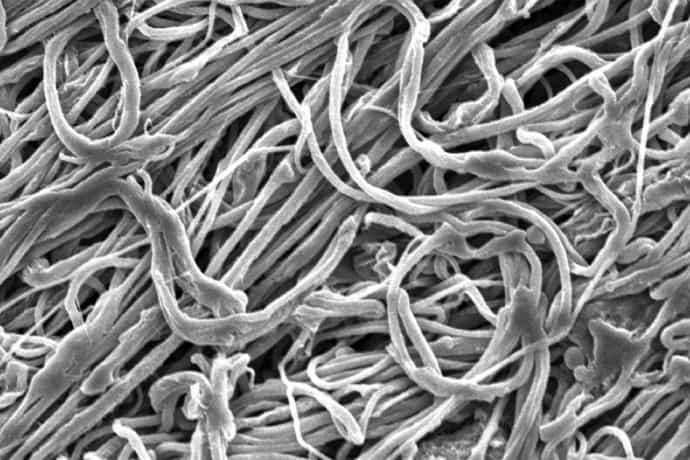Engineers from the Massachusetts Institute of Technology (MIT) in Boston have developed a new process to spin fibres which, they claim, turns ordinary polyethylene (probably the most widely produced and cheapest of all polymers) into fibres only nanometres in diameter but which outperform even the most specialised materials in terms of strength and toughness. Normally, these properties are subject to a trade-off, but the new process, called gel electrospinning, manages to achieve both at high levels, the team claims.

Gel electrospinning combines aspects of two established processes. In gel spinning, a fibre is drawn mechanically from a bath of a polymer gel; and in electrospinning, fibres are drawn from a liquid using electromagnetic fields rather than a physical mechanism to provide the force that draws out the thread. In a paper in the Journal of Materials Science, Jay Park and Gregory Rutledge of MIT’s department of chemical engineering suggest that the very narrowness of the fibres is the key to their extraordinary physical properties.
"We started off with a mission to make fibres in a different size range, namely below one micron. because those have a variety of interesting features in their own right," Rutledge said. "And we've looked at such ultrafine fibres, sometimes called nanofibres, for many years. But there was nothing in what would be called the high-performance fibre range." The ultrastrong fibre market has been dominated by aramid materials such as DuPont’s Kevlar for many years, and nothing has deposed this material from its pedestal, he added.
Gel-electrospun polyethylene seems to have a combination of unparalleled properties, the researchers claim. One of the smallest fibres produced and examined during the project had a diameter of 490±50nm and exhibited a Young’s modulus of 110±16GPa, ultimate tensile strength of 6.3±0.9GPa and toughness of 2.1±0.3GPa.
“What really sets those apart is what we call specific modulus and specific strength, which means that on a per-weight basis they outperform just about everything," Rutledge said.
Normally, if a material is made very strong, it tends to be brittle, Rutledge explained; the two properties are a trade-off. "It's a big deal when you get a material that has very high strength and high toughness," he said. The new fibres have strength comparable to carbon or ceramic fibres, but are both much tougher and less dense. The outstanding properties came as a surprise, as the researchers hoped just to match the properties of existing nanofiobres.
Rutledge and Park are now investigating what gives the fibres their properties. This is due to the fibres being much more highly-drawn than conventional ones, they claim; possibly due to electrospinning being a single-stage process rather than conventional multi-stage mechanical spinning. They suspect that a phenomenon known as whipping instability, which occurs when an jet of liquid is electrified and results in the liquid whipping rapidly backwards and forwards, has the fortuitous effect of speeding up the drawing action of the fibre from the gel, resulting in the very finer dimensions of the fibre. This, in turn, means that the polymer has an unusually high degree of crystallinity and, moreover, that these crystals are aligned along the length of the fibre.
"The strengths are about a factor of two better than the commercial materials and comparable to the best available academic materials. And their toughness is about an order of magnitude better," Rutledge said.
The team has not yet begun to develop the implications of their discovery. "They may have applications we haven't thought about yet, because we've just now learned that they have this level of toughness," Rutledge commented. More compact, lighter and cheaper protective materials such as ballistic armour are a possibility.




Glasgow trial explores AR cues for autonomous road safety
They've ploughed into a few vulnerable road users in the past. Making that less likely will make it spectacularly easy to stop the traffic for...